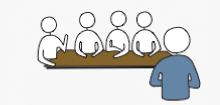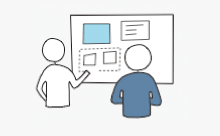Design and Harmonize
This 2nd phase of the project is the heart of User-Centered Design. All efforts and most work products are oriented toward defining the goals and objectives of the user. From ethnography to formative testing of draft hierarchies of structure, the definition of requirements comes alive in documents that define all aspects of a site before the production version is constructed.
For designs that represent incremental improvements over an existing design, the new approach should preserve the valued approaches of the current design - no matter how arcane the current experience is. A transition path should be as painless as possible to lead experienced users to a "more intuitive" interface.
Design objectives
Basic documents
User-Centered Design often begins with a series of meetings to establish which documents will be used.
- End-user interviews
- Creation of Personas & Scenarios of Use
- Comparative analysis
- Functional requirements
- Interaction designs
- Navigation & site maps
- Page layouts & wireframes
- Content templates
- Visual design
The work products produced in this phase of the project become part of the base line of a new site. They can serve not only as reference documents during the current release, but updates to these documents can clarify a path to subsequent releases.
When new functions seem natural, those new ways interacting can be reflected to the current Scenarios of Use. As Scenarios of Use are developed into Use Cases, those can facilitate testing scripts of improvements in function.
Meetings: UCD mode
Focus Groups are a natural way to discover user wants.
 |
Card Sorts discover hierarchies.
 |
Design discussions elict improved interaction design.
 |

